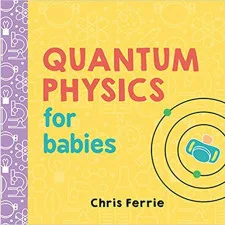5 years ago everything started to change.
When making small talk with a new acquaintance who asked “So what do you do?” I used to make a valiant attempt at describing quantum dots and how they could potentially benefit displays and other technologies like solar, biotech, etc. Usually, they would feign interest until we moved on to another topic.

About five years ago Samsung started their marketing campaign for QLED. That’s when everything started to change.
People started to recognize the word “quantum dot” or at a minimum the acronym QLED from commercials. No longer did my work sound like science fiction. I could actually point to a product that someone could buy, or in some cases they already had in their living room! QLED became the TV of the NFL. People had seen the cheeky adds about watching football on a QLED display. These days I’m hard pressed to find someone who has not at least heard the term QLED.
Samsung ran a robust marketing campaign during the NFL season stating that QLED was “made for football.” I think they have now adjusted their slogan to “made for sports” so as not to upset those in the rest of the world who know football as a game played with the feet.
Case Study #1: The Doctors Office
Here is an imperfect recollection of an exchange I had last week at the doctors office:
Doctor: So, what do you do?
Me: Have you ever seen an add for a QLED TV?
Doctor: Oh yeah, I have!
Me: The “Q” in QLED stands for “quantum dots.” That is what I work on. They make the colors on your TV pop and make the screen brighter and more efficient.
Nurse: Wow, that’s so cool! So is that like real quantum mechanics at work?
Me (impressed they know what quantum mechanics is): Actually, yes, it is! These quantum dots are so small their properties start to change, like the color of light they emit. When you shrink them to the size of nanometers some crazy things start to happen and one can control the properties based on their size.
Doctor: I made it to P-chem (P-chem = physical chemistry) in college and that is when I realized I didn’t know that much about chemistry and decided to be a biology major and go into medicine.
Nurse: I remember learning quantum mechanics and just being blown away. I think I almost failed that class. It all seemed like magic to me.
Me: Yup, quantum dots are the real-world example of a particle-in-a-box system which is the first thing you learn about in P-chem.
Doctor: Wow, that is amazing!
Now, usually my conversations don’t get as deep as discussing quantum mechanics with strangers, but in this case all of them had heard about QLED and had actually taken P-chem in college (I was impressed), so it was pretty cool to nerd-out for a bit. And they seemed genuinely interested. Five years ago there is no way the conversation would have gone this way. I would have tried to explain quantum dots and they would have politely said “cool.”
Case Study #2: Quantum Physics for Babies
It’s not uncommon to receive a gift of books when you have a newborn. Someone who knows me (and my kids) well gifted us a book entitled “Quantum Physics for Babies.” It has become a fan favorite for bedtime reading at my house. The book introduces neutrons, protons, and electrons with simple wording that any young kid (or adult for that matter) can understand. Furthermore, they have a few pages dedicated to electronic energy levels, including allowed and forbidden states, and the process of light absorption and emission (fluorescence). It is quite impressive the scientific principles the author can get across in only a few dozen words total.
 An excellent way to introduce kids and adults alike to the complex topics of quantum physics.
An excellent way to introduce kids and adults alike to the complex topics of quantum physics.
I quickly realized the parallels between my work on quantum dots and the concepts taught in the book. So I did what any good parent and STEM-lover would do and used the book to describe to my kids the type of science I do. It is very rewarding to now hear them talk about what I work on using terms like “fluorescence” or “quantum physics” or “electrons.” Perhaps I have a few budding scientists in the making.
Some people have jobs that are easy to explain to others. For a long time I did not, but now I’m able to point to everyday products to explain the complex world of quantum dots. And soon my kids will be talking about Schrodinger’s cat instead of real cats and it will be amazing. (PP)
Peter Palomaki is the owner and chief scientist at Palomaki Consulting, a firm specializing in helping companies solve big problems at the nanoscale. His utilizes his expertise in quantum dots and materials chemistry to solve challenging problems with clients large and small.


